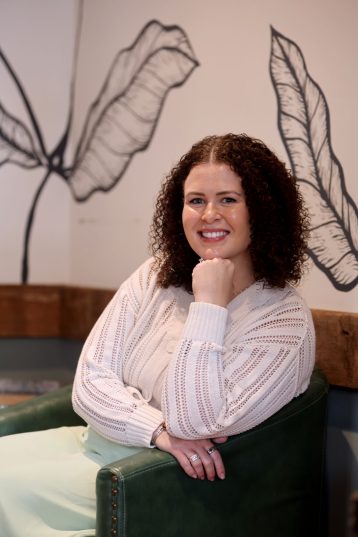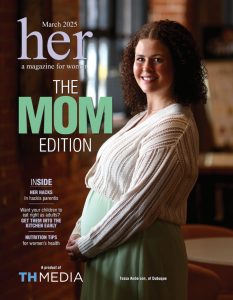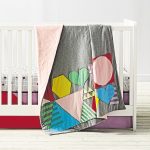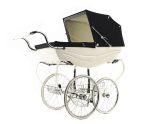Imaginative play has long been the trademark of childhood. Dolls, tea parties, dress-up, pretend battles and action figures are what many of us associate with good, old-fashioned child’s play.
Parents today face intense criticism about the amount of time children are spending on electronic devices when they could be engaging in imaginative play. Technology has become the face of the enemy to healthy childhood development.
According to child psychologist Susan Linn, however, it is not just technology that is detrimental to the healthy development in our children. It also is the intense commercialization of childhood toys that has become rampant in the toy industry today.
Linn is a puppeteer and a ventriloquist who uses her puppets as play therapy with children of all ages and backgrounds. She goes into hospitals and schools to work with children who have experienced trauma, as well as those who are experiencing normal growing pains associated with changes in life.
Linn has spent many years researching the benefits of imaginative play for children. She and other child psychologists agree that play serves two primary purposes for children.
The first is to develop the capacity for fantasy and imagination — to think beyond the reality of “what is” to “what might be.”
The second is to provide children a safe place to reflect on and make sense of new things they are observing in the world and to experiment with natural consequences and limits.
When we pause to remember instances when we have seen children at play, or even reflect back on our childhood play experiences, this makes sense.
A baby playing peek-a-boo is beginning to understand that people who leave her sight aren’t gone forever.
A young child with a new sibling on the way plays with a doll to express his feelings about the new arrival and to begin thinking about ways a new baby will interact with the family.
Children putting on dress-up clothes are learning to step into others’ shoes and look at the world through their eyes; they might even be experimenting with new vocabulary they have learned at home or at school.
Others play with Legos to create new worlds and characters that can be torn down and rebuilt to become whatever it is their creators need them to be.
Imaginative play gives children control of their world and endless opportunities to create. It is a safe space for them to make sense of events happening around them or to them in life.
A vital aspect of healthy imaginative play, many childhood experts stress, is access to open-ended toys and materials. This includes generic dolls and actions figures, blocks and Lego sets that come without explicit building instructions, art supplies that aren’t part of a kit to create a particular product and dress-up clothes and accessories that aren’t linked to a popular character from TV or the movies.
This is because when children are given toys tied to already established characters or with materials designed to build a specific product, there is no room for them to create what they need for the visions in their heads. These toys often stifle their imaginations.
When children are given a regular doll, they can create a name and a personality that suits whom they need that doll to be in that moment. That doll can become a friend, a foe, a pupil, a sibling, or an alien. Interactive play develops around the original character the child creates.
When children are given an Elmo toy, they find themselves confined to giving him the personality traits they have seen him exhibit on TV. Their play is no longer open-ended but molded around Elmo’s already well-developed personality.
This also holds true for interactive toys. When a child is given a doll or toy that talks, the play is determined by the words that come out of the toy’s mouth. The play becomes reactive as the child must respond to the doll’s words if he or she wants the story line to make any kind of sense at all.
One doesn’t have to think too hard to realize how restrictive Lego and other building sets (including art kits) that come with step-by-step directions and corresponding pieces can be. There is one correct way to build this toy, and while it might be possible to create other projects with the materials provided, the visual on the cover of the box already has halted the creative process in its tracks.
Marketing experts working for toy companies have become very good at doing their jobs. They want us to become attached to the characters they have created so that we buy their products. Likewise, they want us to believe that there is one way to build or create with their kits designed for imaginative play. That way, when we have finished making what we were supposed to with the materials provided in that box, we will buy the next kit in the set to continue with our play.
If a toy company sold us a stick and told us it could be anything we needed it to be, we would have no reason to purchase anything else.
When I think back to my daughter’s playroom, I remember it was overflowing with toys — more than one child could ever need. I also know that most of those toys were Disney characters and play sets themed around TV shows popular with children her age. And when I am honest with myself, I bought those toys just as much for me as for her. The colorful characters and their worlds appealed to me — perhaps even more than they did to her.
I am not suggesting that it is wrong to buy toys connected to characters we hold dear in our hearts. Like anything in life, though, I believe balance is key. If I were to go back in time to when my daughter was younger, I like to think I would be more mindful of ensuring that she had a better variety of toys to choose from — a healthy balance of commercialized toys and open-ended choices that allowed for more imaginative play.
Melissa Hyde has a masters in education from Pepperdine University in Los Angeles and more than 10 years experience teaching elementary education. She works for Challenge to Change in Dubuque, teaching children social emotional regulation skills through the practices of yoga and mindfulness.



















